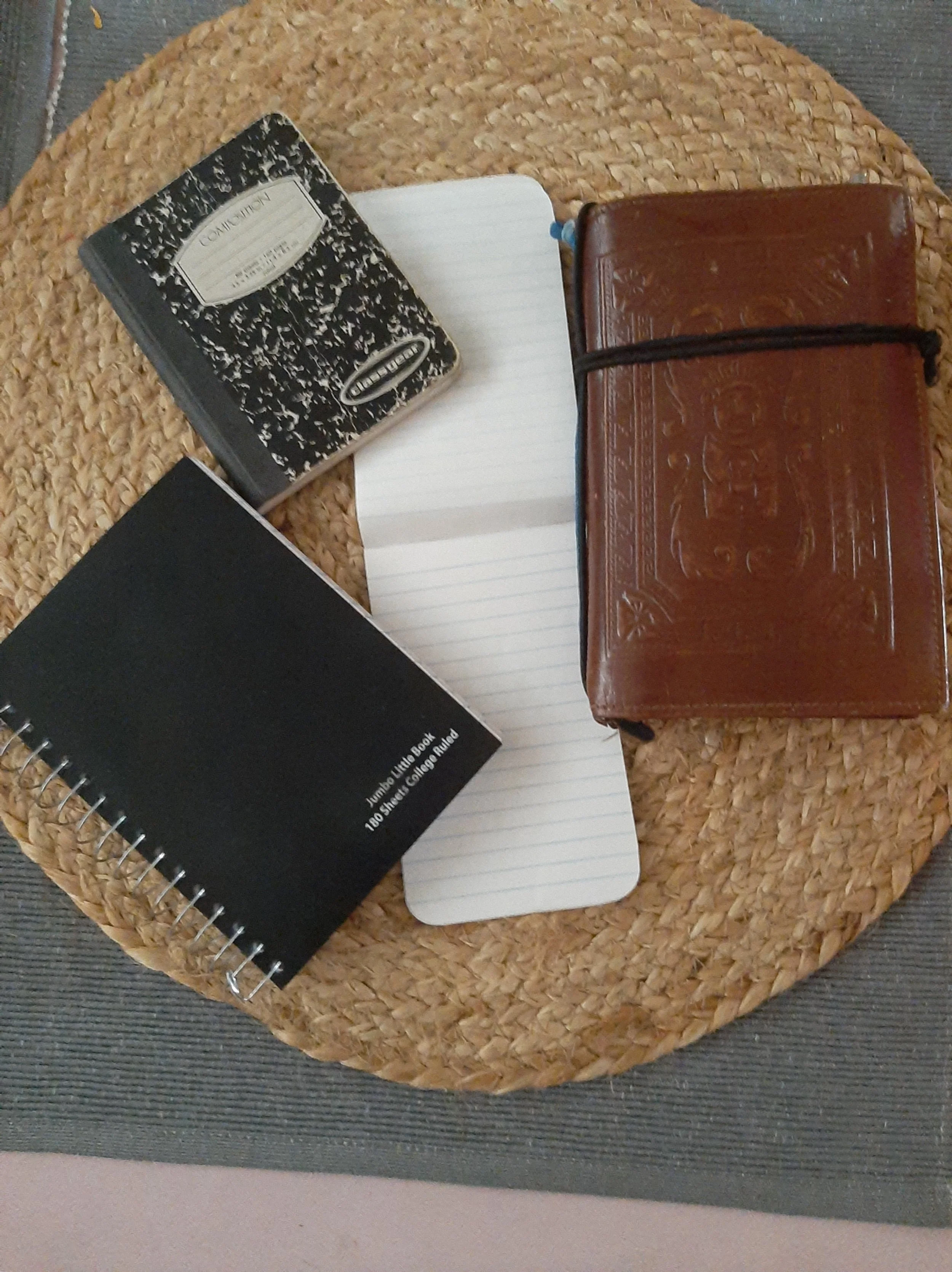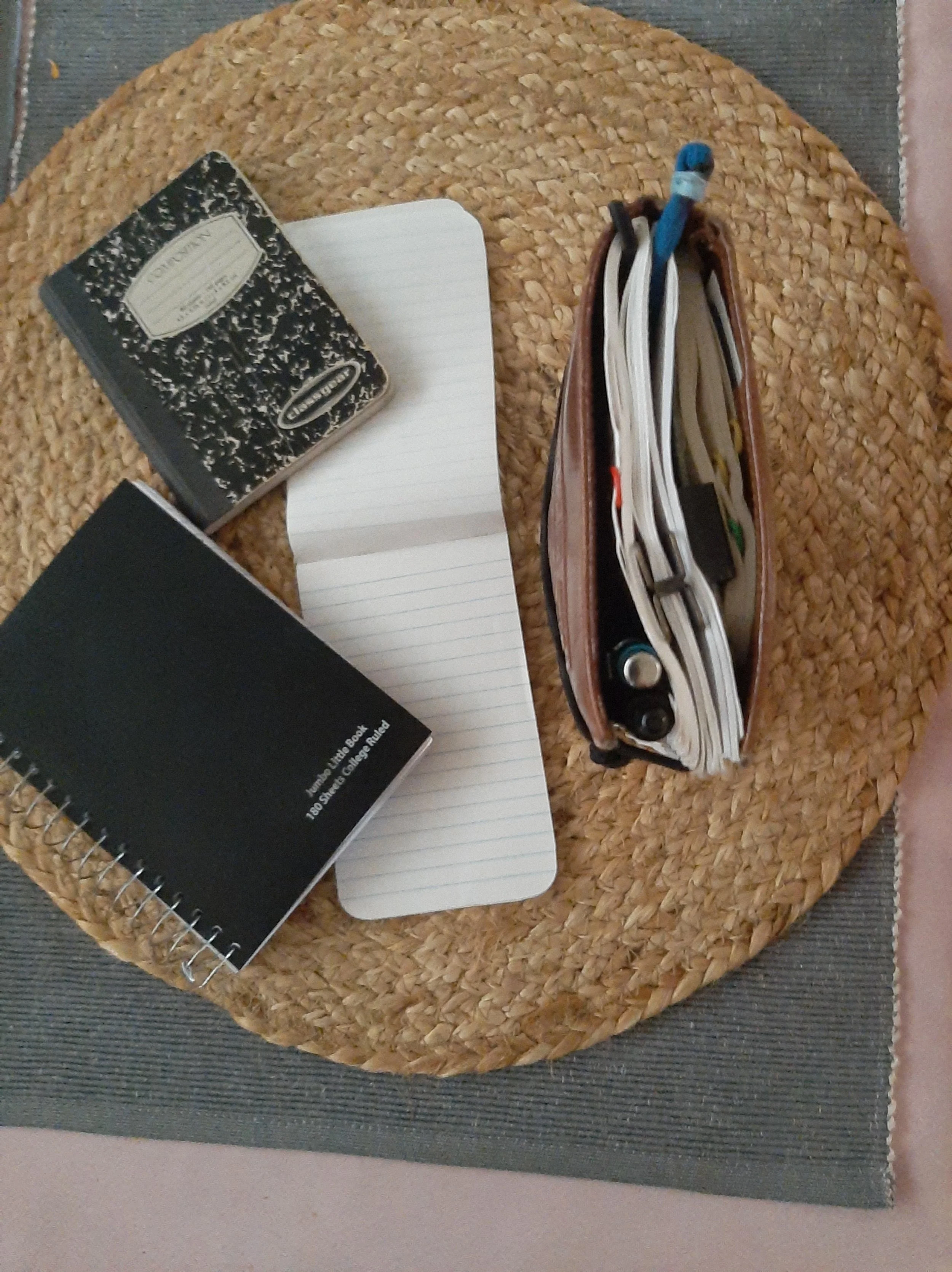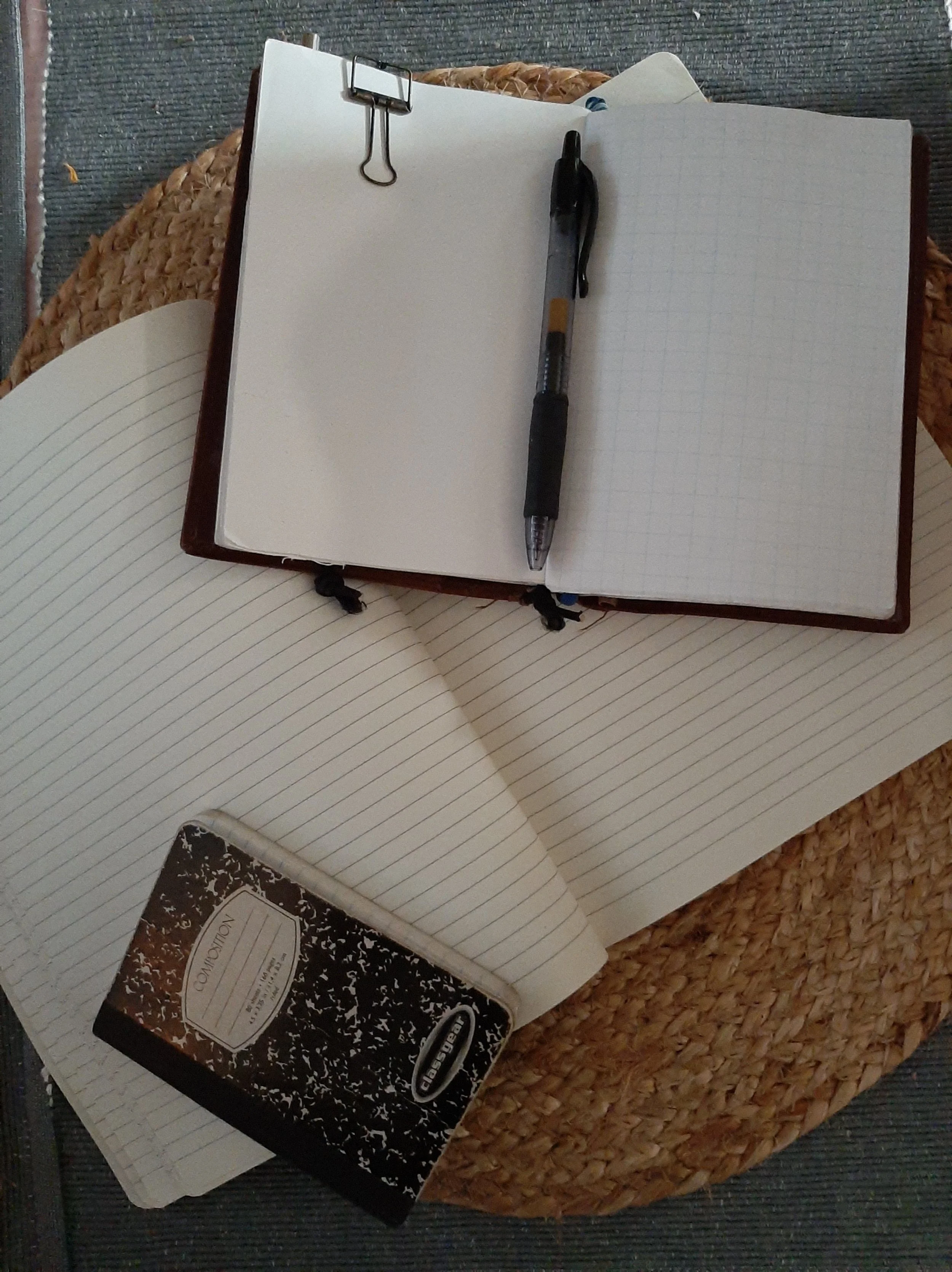Pen to paper… Why so serious?
Why do we write it down? Why sketch it out? What’s important to do or not forget? I know I’m getting old, but what is older is the action of putting pen or pencil to paper, and more so now in the tech world, is to key in your notes, which is still the fundamental concept of jotting it down, recording, and remembering. The little pocket notebook has been around since I was a kid, and it’s still here; it must still be favored to write things down, from the little things to the complex to the overthinking breakthrough moments that will bring us fame and fortune. And it all starts with a bit of thought and action from pen to paper.
Since school, we were taught to write, read, and take notes for quizzes and tests. We were taught what was important in the lecture or what we read to get the key points, record, and remember. In art school, we were taught how important a sketchbook can be for our craft, not only for practice but to explore different media and ideas. Being able to sketch what we see and what we can create is essential to our growth as an artist. The sketchbook is a reminder to be persistent at it, pick it up, and scribble, draw, or paint. At that moment when it becomes essential, we should record it so we don’t forget it. There are many words for this action of personal importance from sketching to journaling to jotting it down, all the way to the sacred diary. If it’s in the notebook, it must be significant, and rightfully so; we use it as a balance of tasks that need to be done to keep us on point. Some applications are Ideas and reminders we need to spitball with bosses and clients, and as random sketches and tasks, the thought and action that needs to be done are also the many choices of pocket notebooks to regular-sized journals and sketchbooks we want to use to “jot it down.”
Diary entries and journaling can come in many forms, and we all have our style and how it will work best for us. There is something about holding the booklet and going through the motions with the writing instrument that is elegant and nostalgic. But most importantly, it’s personal; our thoughts, ideas, and agendas help us find purpose and fulfillment. Most importantly, we get our ducks in a row and prepare for action to conquer what is on our minds.
Our booklet can be significant, small, thick, or just sheets of paper in a folder; there is no right or wrong way to do it. The adventure in our notepad starts with nothing but its empty shell, then the journey unfolds as each entry takes place, and in the end, I think it reflects many versions of growth and personal ambition that we are all capable of. Ultimately, the empty shell becomes a complete book of us with random to complex ideas, wish lists, and essential to-do lists. When someone writes something down, I think it shows responsibility, which, in turn, shows me good character.
I know my notebook is not the most organized; it’s filled in all random pages with all sorts of different things and more than eleven-teen paper clips to separate specific entries and sections, and the truth is it works for me. I rather have my journal notebook chaotic than my life. The main objective should be to balance every day with what is most important and finish your day on a level you’re happy with. You’re delighted with the outcome and find it’s a good stopping point to be continued the next day; I call it plugging away and progress. And every day I’m going to figure out a better way to trek through my life, from note-taking to personal achievement.
My old leather go-to wallet
It Holds a small notebook and sheets of grid, lined and sketch paper that I cut myself and fixed to shock cord and paracord. I carry at least 2 small pocket notebooks, one for art ideas and the other for random day to day progress and plugging away!
Paper is a clutch for me, not so much the quality of paper but the layout of the style of paper, because of what I use it for in my go-to journal business random work notebook. I cut my paper, which I like to size, and fold it into individual booklets. I try to have at least blank sketch paper and a grid layout to line traditional paper, and I’m getting used to the dot grid paper which I find pretty cool—and paper clip each section to get to them quickly. I like my style because of the convenience of having all types of different layouts on paper that I want and need. I have found making little notebooks rewarding, and the mix of paper I find unique because I can’t find them to buy, and I enjoy my complete book that has that one-stop shop for my drawing and writing needs.
I added blank sketch paper and grid paper for different options for different entries I may want. The pages are cut to size, folded, and held together with shock cord for one booklet and paracord for the other little booklet. It works for me. But don’t get me wrong, the convenience of store-bought notebooks and journals is more than adequate, and the paper quality is quite suitable for smooth writing and note-taking. I try not to overthink my notebooks too much. With each one I use and go through, I learn maybe a better way to organize my thoughts and notes for the next time; growth is good, and pen to paper reinforces that notion to be better at my job, my thoughts, and more importantly to be better organized in my life. Write your story then live it, carry a little or big booklet, and invest the time to jot it down to remember what is important to you. “Stay safe and adventurous wherever the day takes you.”






